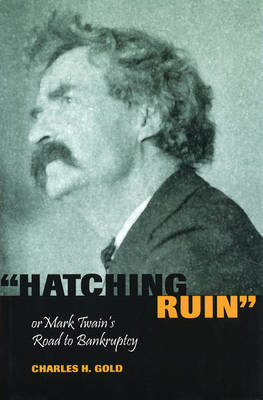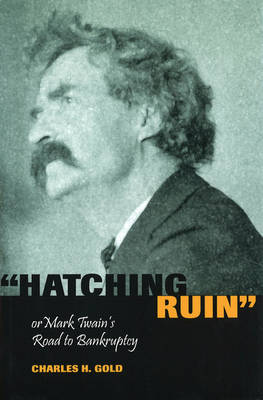
Door een staking bij bpost kan je online bestelling op dit moment iets langer onderweg zijn dan voorzien. Dringend iets nodig? Onze winkels ontvangen jou met open armen!
- Afhalen na 1 uur in een winkel met voorraad
- Gratis thuislevering in België vanaf € 30
- Ruim aanbod met 7 miljoen producten
Door een staking bij bpost kan je online bestelling op dit moment iets langer onderweg zijn dan voorzien. Dringend iets nodig? Onze winkels ontvangen jou met open armen!
- Afhalen na 1 uur in een winkel met voorraad
- Gratis thuislevering in België vanaf € 30
- Ruim aanbod met 7 miljoen producten
Zoeken
Hatching Ruin, Or, Mark Twain's Road to Bankruptcy
Or Mark Twain's Road to Bankruptcy
Charles H Gold
€ 65,95
+ 131 punten
Omschrijving
In "Hatching Ruin," Charles H. Gold provides a complete description of Samuel L. Clemens's business relationships with Charles L. Webster and James W. Paige during the 1880s. Gold analyzes how these relationships affected Clemens as a person and an artist, most notably in A Connecticut Yankee in King Arthur's Court. The 1880s were a time when Samuel Clemens was more businessman than author. Clemens wanted to be rich. From an early age, he had dreamed of wealth. Suspicious of his previous publisher, Clemens started a publishing company and placed Charles L. Webster, who was married to his niece, at the head of it. He also invested large sums of money with James Paige, who was developing a typesetting machine. These were to be Clemens's instruments of success--his way to bring technology to the world and become so rich that he would never need to earn money again.Unfortunately for him, Paige was a perfectionist and a compulsive tinkerer who never stopped working on the typesetting machine. When, after early success, the publishing company began to fail, Clemens was unable to continue his investments in the typesetter. He blamed both Webster and Paige for his failure to "get rich quick" and for his eventual bankruptcy in 1894. Gold argues that these financial changes in his life helped to shape Connecticut Yankee, an important novel and cultural statement.At the beginning of the 1880s, while life was still good, Clemens wrote Adventures of Huckleberry Finn, in part a nostalgic look at youth and innocence in preindustrial America. A Connecticut Yankee in King Arthur's Court, written after the author's financial failures, is a savage condemnation of the Gilded Age, especially technology's role in it. Gold's "Hatching Ruin" tells for the first time the full story of Clemens's experiences as an investor, employer, and entrepreneur during the Gilded Age.Gold uses previously unpublished material from family correspondence and Clemens's autobiographical dictations to present a far more complex picture of the man most people know only as Mark Twain. He also offers a fuller depiction of Charles Webster and his relationship with Clemens than was previously available, while answering many questions that have hung over that relationship. This book will have a wide appeal to both Twain students and scholars, as well as anyone interested in social history.
Specificaties
Betrokkenen
- Auteur(s):
- Uitgeverij:
Inhoud
- Aantal bladzijden:
- 184
- Taal:
- Engels
- Reeks:
- Reeksnummer:
- nr. 1
Eigenschappen
- Productcode (EAN):
- 9780826214508
- Verschijningsdatum:
- 1/04/2003
- Uitvoering:
- Hardcover
- Formaat:
- Genaaid
- Afmetingen:
- 160 mm x 238 mm
- Gewicht:
- 439 g

Alleen bij Standaard Boekhandel
+ 131 punten op je klantenkaart van Standaard Boekhandel
Beoordelingen
We publiceren alleen reviews die voldoen aan de voorwaarden voor reviews. Bekijk onze voorwaarden voor reviews.











